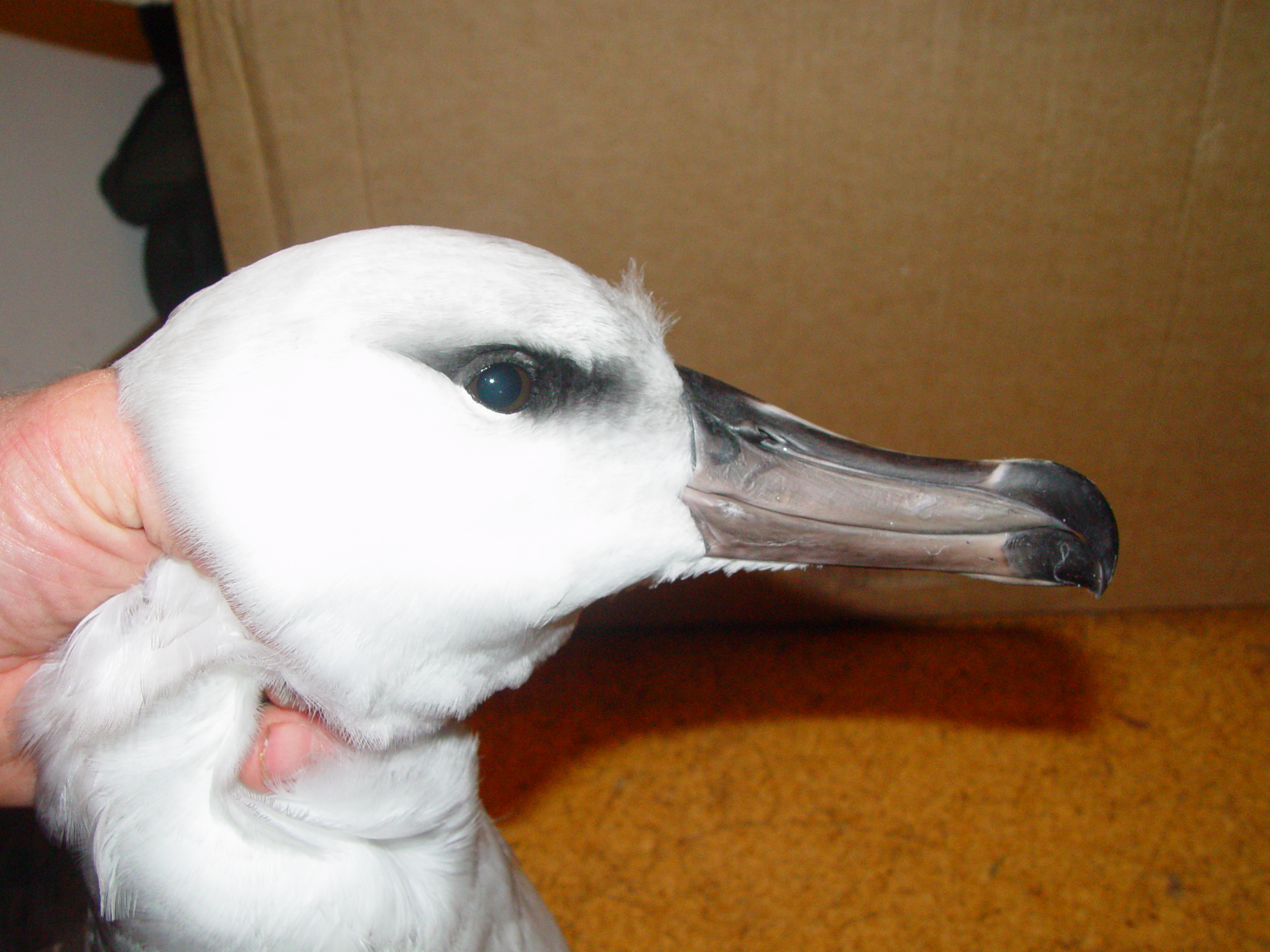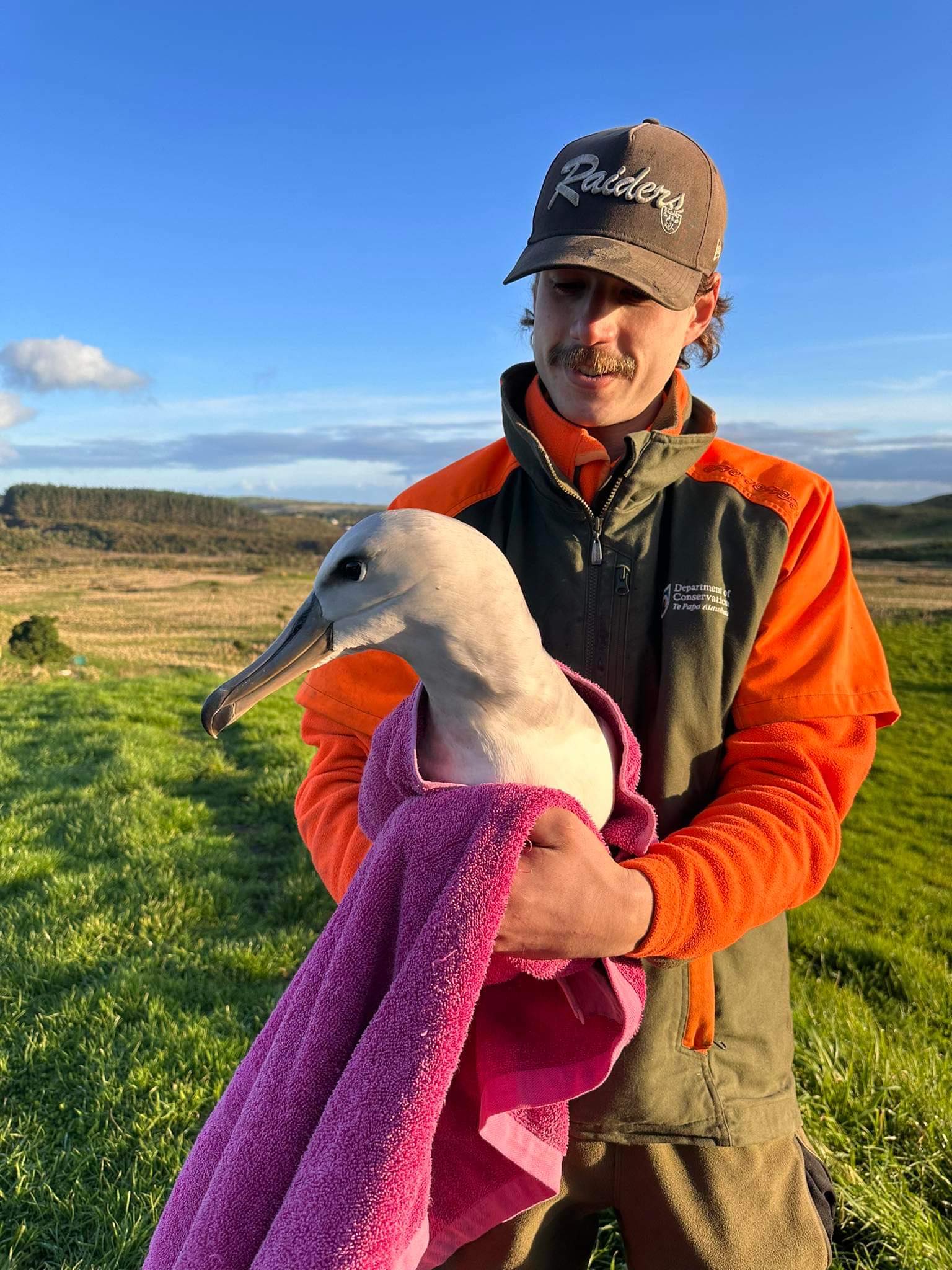
A grounded Buller’s Albatross fledgling held by Kayne Merwood prior to its release on World Albatross Day, photograph by Bridget Preece, Kopi Bush Retreat
The New Zealand Department of Conservation (DOC) team of rangers based on Rēkohu/Wharekauri/Chatham Islands has reported of a globally Near Threatened and nationally Endemic and Declining Buller’s Albatross Thalassarche bulleri fledgling landing on the main Chatham Island during the night of 18 June and then being rescued and released the next day on World Albatross Day . The team’s report on its Facebook page follows:
“Last Monday was World Albatross Day and, as if on cue, they began to fall from the sky with our office getting three reports in as many days of juvenile Buller’s mollymawks/hōpo/toroa crash landed on roads or farms where they are vulnerable to vehicles and dogs. In May/June each year these fledgling birds are taking their first flight from Rakitchu/Rangitatahi/The Sisters and Motchu Hara/Motuhara/Forty-Fours. Luckily for these birds some very thoughtful and caring members of the community were on hand and got in touch with our team. With the help of rangers and even assistance from our awesome local fire brigade they were relocated to high, windy spots to have a chance at relaunching. Hopefully they’ll be back in about 12 years’ time to have chicks of their own.”
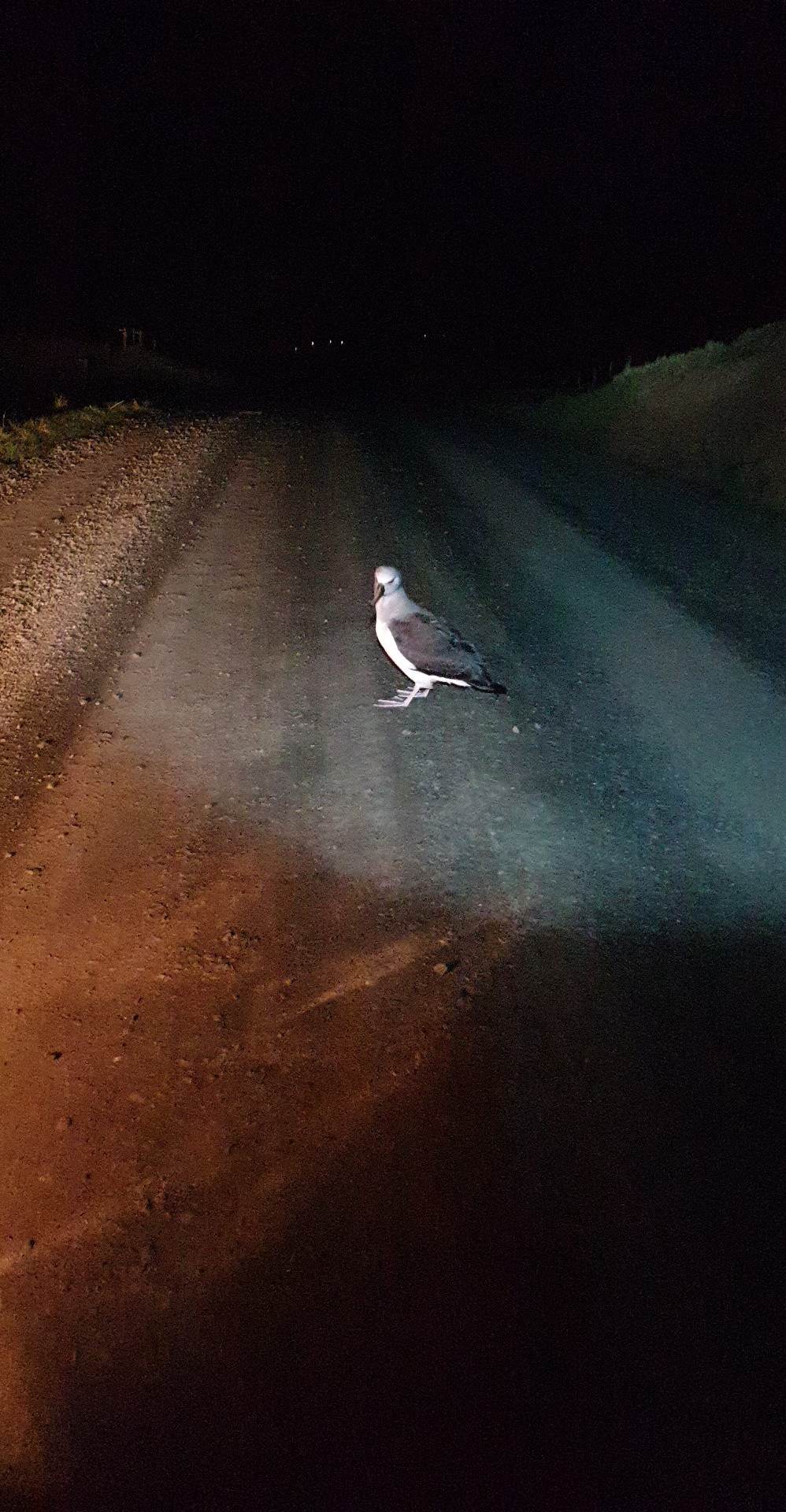
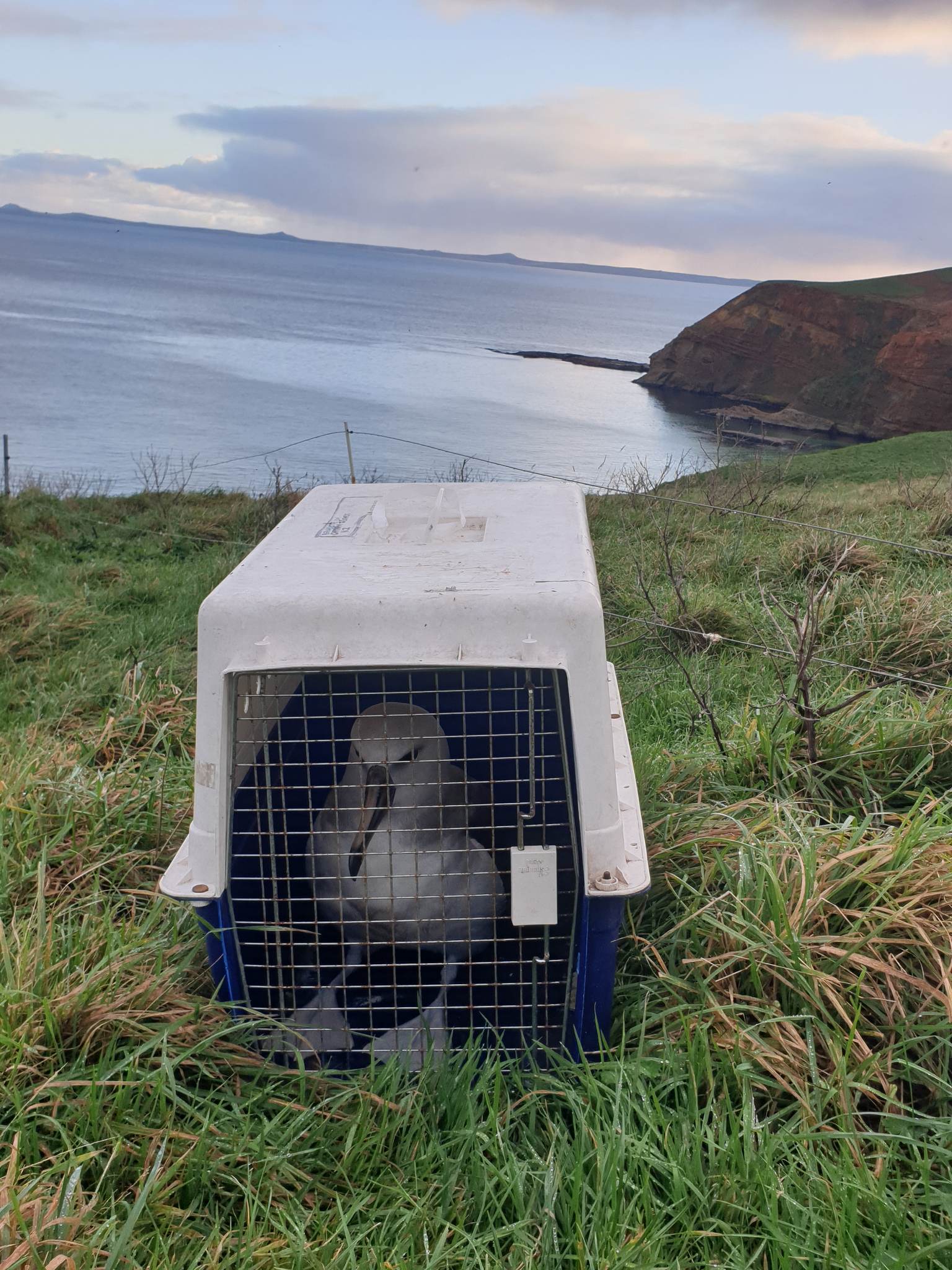
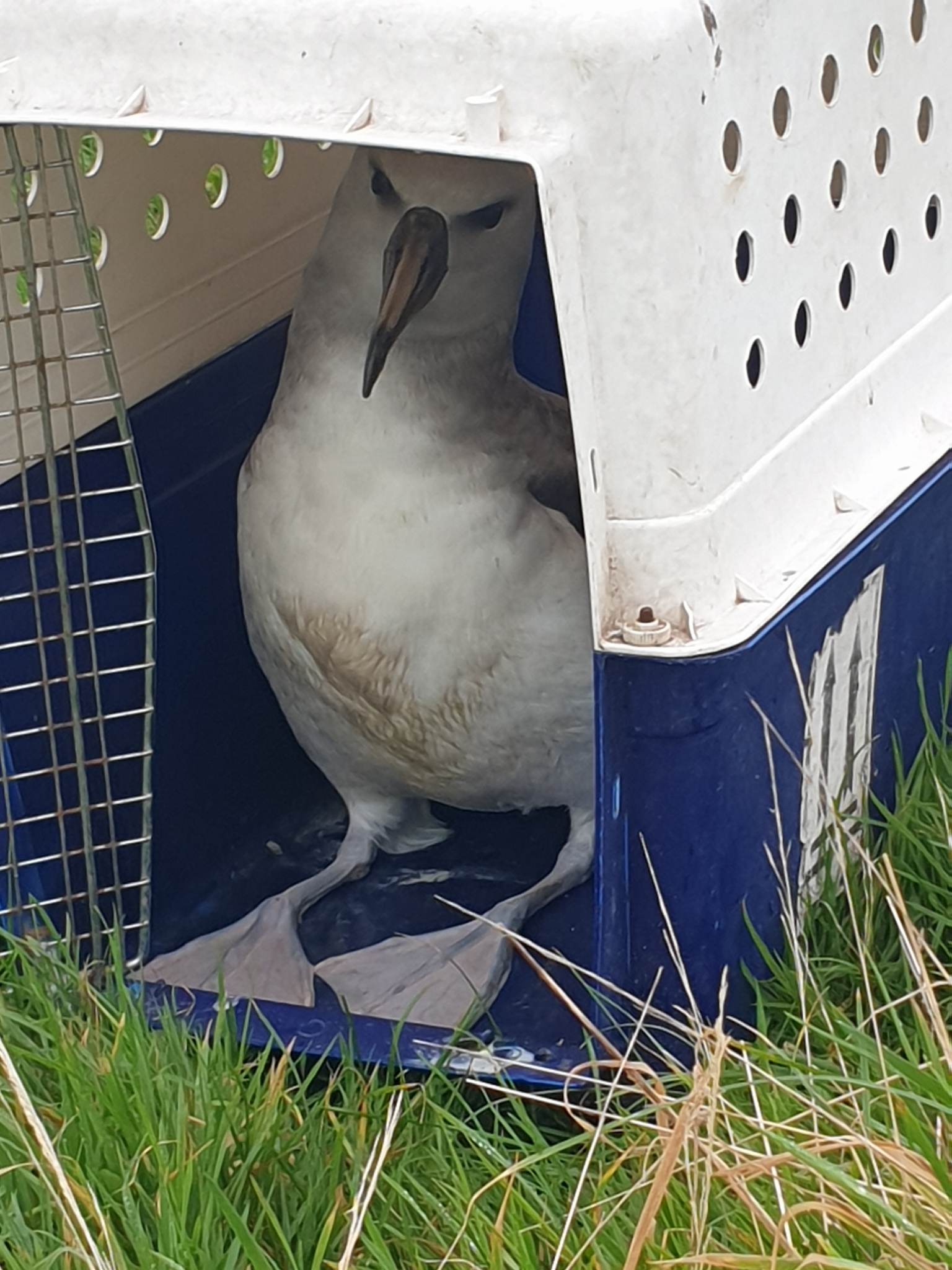
This fledgling Buller’s Albatross was found on a Chatham Island road at night and then released from a sea cliff, photographs by Bernadette Lim, Chatham Volunteer Fire Brigade
ACAP Latest News reached out to Gemma Green, DOC Ranger (biodiversity) on the Chatham Islands for some more details. In reply, she tells ALN that so far this breeding season five fledgling Buller’s Albatrosses have become grounded on Chatham Island, rescued, and then released on high ground or from sea cliff edges where they will more easily be able to take flight. She writes that they hear of one or two fledgling Buller’s Albatrosses each year although they might not all get found or reported to us. “This year seemed to be particularly bad, maybe due to the unseasonably light easterlies we had over the past couple of weeks. It’s gone back to more normal strong winds now so hopefully no more.”
DOC marine ornithologist, Graeme Taylor says that there have been reports in the past of one or two Northern Buller’s Albatrosses T. bulleri platei showing up grounded on beaches around the northern end of the main Chatham Island and mostly in June which is the month they fledge. These have been assumed to have come off The Sisters where the northern subspecies breeds as the winds are typically northerly or westerly at the Chatham Islands and this direction would blow birds from The Sisters up on the northern beaches. But with the easterly winds this season’s grounded birds are just as likely to have come from the Forty-Fours which are well out to the east of the main island.
With The Sisters being c. 16 km away from the main Chatham Island the situation appears similar to that of occasional fledglings of the Endangered Indian Yellow-nosed Albatross T. carteri from South Africa’s Prince Edward Island being recorded ashore on Marion Island – where the species does not breed – at a distance of 22 km (click here). The Forty-Fours are about three times as distant at 50 km, so it may be the crash-landed albatrosses more usually came from The Sisters under the influence of the prevailing westerly winds.
The presumed Campbell Albatross ashore on Chatham in 2007, photograph from Graeme Taylor
Graeme Taylor adds that back in April 2007 a presumed Campbell Albatross T. impavida (Vulnerable) was found on the road near the Chatham Island’s DOC office. It was a recently fledged juvenile but separating them at that age from Black-browed Albatrosses T. melanophris (Least Concern) is problematic because both then have dark eyes.
With thanks to Gemma Green and Graeme Taylor, New Zealand Department of Conservation.
John Cooper, Emeritus Information Officer, Agreement on the Conservation of Albatrosses and Petrels, 06 July 2023

 English
English  Français
Français  Español
Español 